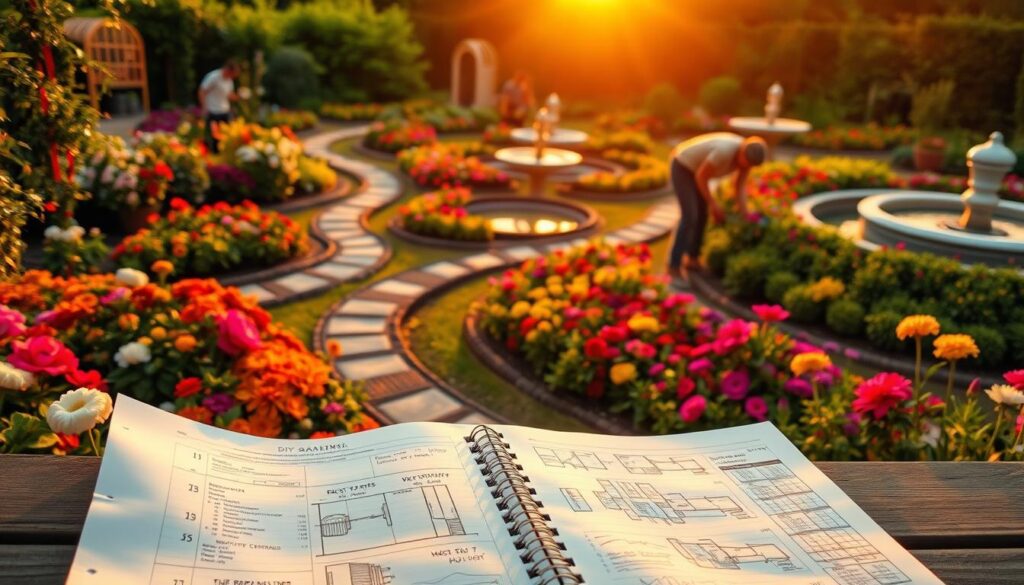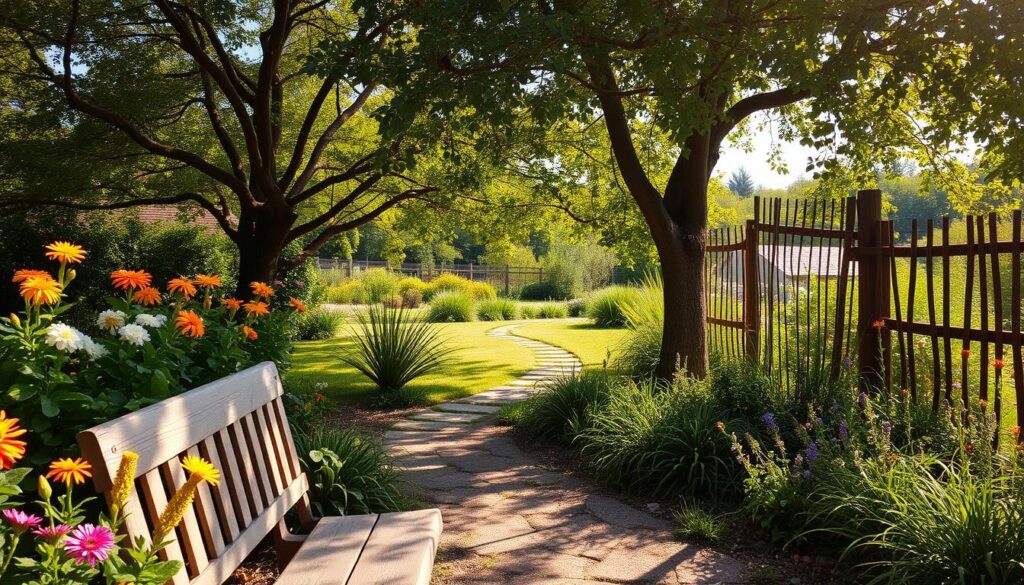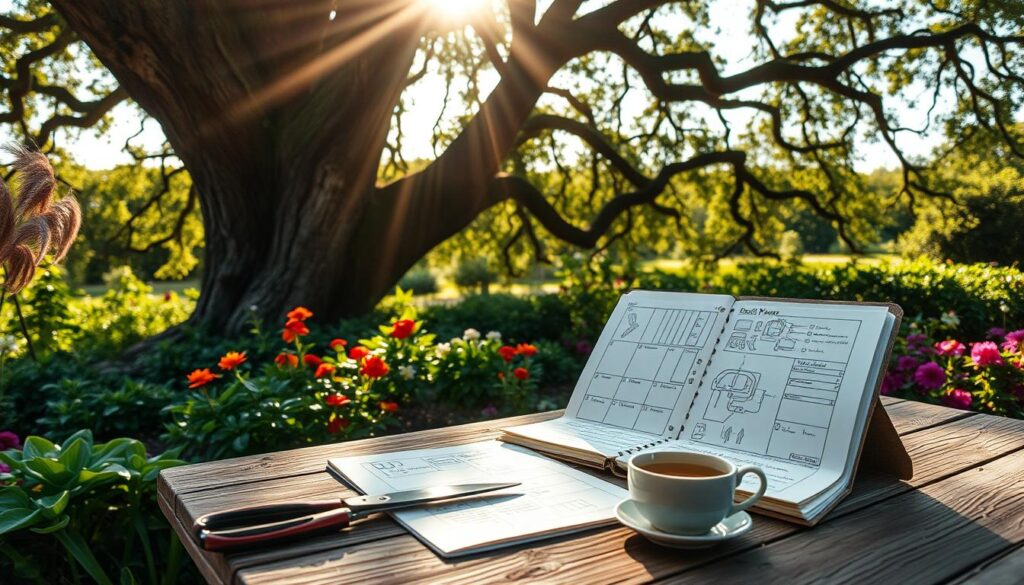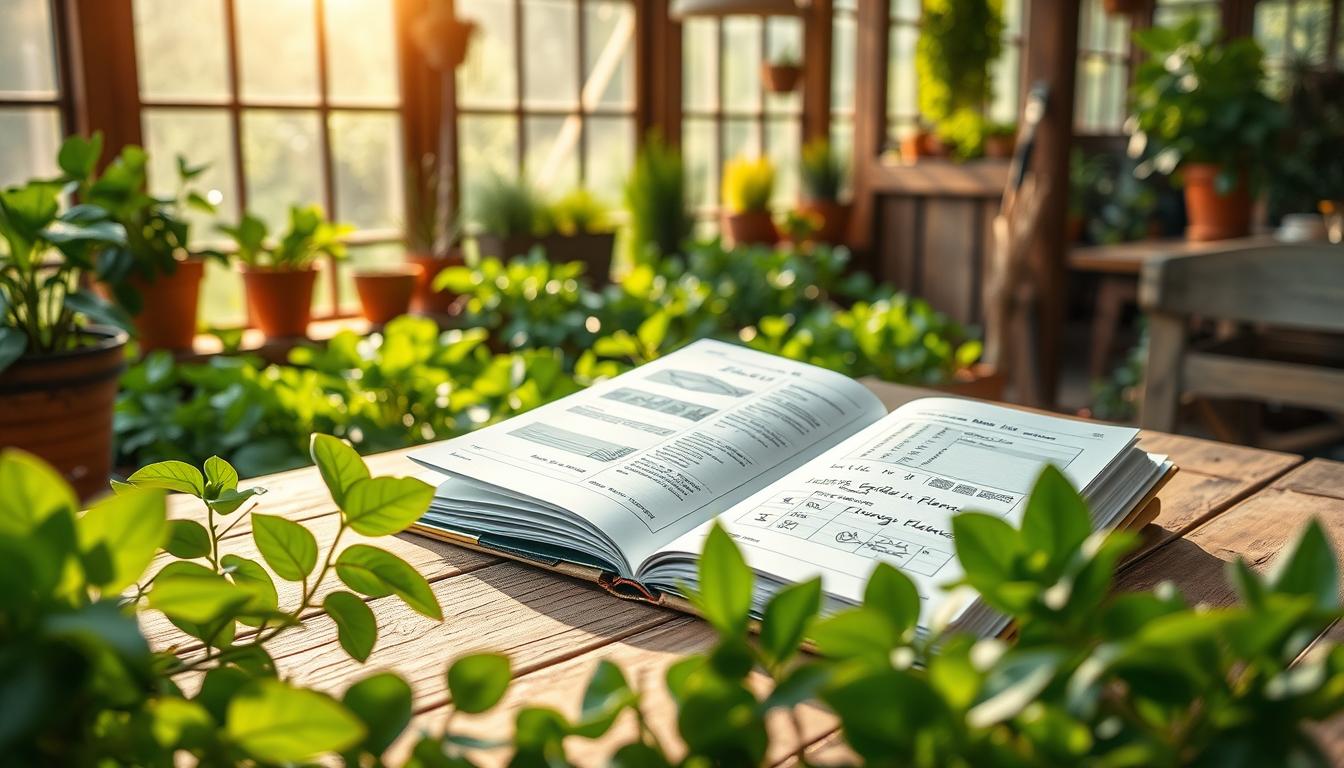Starting a new project can feel overwhelming, especially when it involves plants and seasons. A well-thought-out system can make all the difference. Whether you’re a beginner or have years of experience, having a clear plan can reduce stress and boost your success.
Imagine maximizing your growing space and aligning your planting with the right time of year. For example, Lori, a passionate gardener, began with a small 10’x10′ plot and transformed it into a thriving space over 15 years. Her secret? A customized approach that worked for her unique needs.
Generic templates might not always fit your goals. Instead, creating a personalized system can help you map out beds, track planting calendars, and even journal your progress. This ensures you’re prepared for every season and can adapt as your space evolves.
Common questions like “Where do I start?” or “How big should it be?” can be answered with the right tools. Physical planners, for instance, offer a reliable alternative to apps that may become outdated. They keep your plans accessible and organized, year after year.
Key Takeaways
- Planning reduces stress and improves results for all skill levels.
- Custom systems work better than generic templates.
- Proper planning maximizes space and aligns with seasonal cycles.
- Physical planners are a reliable, long-term solution.
- Journaling helps track progress and adapt over time.
Why a DIY Garden Planner is Essential for Every Gardener
Every successful gardener knows that organization is the key to thriving plants. A personalized system helps you stay on track, whether you’re growing vegetables or flowers. It ensures you make the most of your space and time, year after year.

Keeping a journal is one of the most effective ways to improve your results. By documenting frost dates, crop rotations, and soil changes, you create a valuable reference guide. This historical data helps you troubleshoot issues like pest cycles or nutrient deficiencies.
The Benefits of Keeping a Garden Journal
A journal allows you to track the performance of different plants over the years. For example, noting which tomato varieties thrive in your soil can save you time and effort. It also helps you identify microclimates in your space, ensuring each plant gets the best conditions.
Case studies show that gardeners who map their beds and track progress reduce plant loss by up to 40%. This level of detail prevents costly mistakes, like replanting due to poor planning. A journal turns your gardening experience into a personalized guide for success.
How a Planner Saves Time and Money
Proper planning can save you over $200 annually on wasted seeds and starts. By creating a weekly task list, you avoid feeling overwhelmed and ensure nothing is overlooked. Automated systems, like the Smart Gardener app, save users 2-3 hours each week.
Paper planners are a reliable alternative to digital tools, preventing data loss if apps become defunct. They also provide a tangible way to review your progress and adjust your plans as needed. Whether you prefer digital or paper, a planner is an investment that pays off.
| Benefit | Time Saved | Cost Saved |
|---|---|---|
| Automated Task Lists | 2-3 hours/week | $50/year |
| Bed Mapping | 1 hour/month | $100/year |
| Documenting Frost Dates | 30 minutes/season | $50/year |
With the right tools and a bit of planning, you can transform your gardening experience. A well-organized system not only saves time and money but also helps you achieve better results every year.
Getting Started with Your DIY Garden Planner
Planning your growing area starts with understanding your unique environment. By assessing your space and gathering essential details, you can create a system tailored to your needs. This approach ensures your plants thrive and your efforts yield the best results.

Assessing Your Garden Space and Needs
Begin by evaluating your available area. Consider factors like sunlight, wind patterns, and soil quality. Tools like Sun Surveyor can help analyze sunlight exposure, ensuring each plant gets the right amount of light.
Raised beds, especially those 3′ wide, are ideal for optimizing planting and maintenance. They provide better drainage and easier access. For example, Lori’s cutting garden features three 3’x12′ beds, maximizing her space efficiently.
Gathering Essential Information: Frost Dates, Soil Type, and More
Understanding your local frost dates is crucial for timing your planting. Use calculators from local extension offices for accurate predictions. This prevents losses from unexpected cold snaps.
Soil testing kits are a small investment with big returns. For $15, you can identify nutrient deficiencies and pH levels, saving over $100 in potential crop losses. Pair this with companion planting charts to naturally control pests and boost growth.
Finally, spatial planning templates help organize raised beds or in-ground plots. Resources like USDA zone maps and precipitation charts provide valuable insights for your unique environment.
Step-by-Step Guide to Creating Your DIY Garden Planner
Creating a personalized system for your outdoor space doesn’t have to be complicated. With the right tools and techniques, you can organize your planting areas efficiently and ensure a thriving environment. Let’s break it down into simple steps.

Choosing the Right Tools: Paper vs. Digital Planners
Deciding between paper and digital tools depends on your preferences. Paper journals are reliable and don’t require updates, while apps like Seedtime offer automated features. Hybrid systems combine the best of both worlds.
- Paper Journals: Tangible and easy to customize.
- Digital Apps: Automate tasks and sync with calendars.
- Hybrid Systems: Use paper for notes and apps for reminders.
Mapping Out Your Garden Beds and Planting Zones
Mapping your beds ensures you maximize space and efficiency. Techniques like square foot gardening or French intensive layouts can boost yields. For example, GrowVeg’s curved bed designs increase yield by 15%.
“Proper bed mapping prevents overcrowding and ensures each plant thrives.”
Use tools like Gardena’s desktop interface for complex layouts. This helps you visualize spacing and plan for succession planting.
Creating a Planting Calendar for the Year
A planting calendar keeps you on track throughout the seasons. Sync it with moon phases for optimal timing. Decoding seed packets is essential to align planting dates with your local frost schedule.
- Frost Dates: Use local extension office calculators.
- Succession Planting: Plan for multiple harvests.
- Spacing Hacks: Tight planting works for cut flowers, while food crops need more room.
With these steps, you’ll have a well-organized system tailored to your needs. Whether you’re growing vegetables or flowers, proper planning ensures success.
Tips for Successful Garden Planning
Effective planning can transform your outdoor space into a thriving, productive area. By focusing on the right strategies, you can maximize your yields and create a sustainable system. Here are some practical tips to help you succeed.

Selecting the Right Plants for Your Climate and Space
Choosing the right plants for your environment is crucial. Consider your local climate, including frost dates and sunlight exposure. For example, Smart Gardener’s varietal-specific data has been shown to improve yields by 25%.
Beginner-friendly options like sunflowers, zinnias, and cosmos are great for starting out. These varieties are hardy and require minimal maintenance. Exploit microclimates in your space, such as urban heat islands or rural frost pockets, to optimize growth.
Companion Planting and Crop Rotation Strategies
Companion planting can enhance your vegetable and flower beds. For instance, tomato-basil intercropping has proven to boost growth and deter pests. Tools like GrowVeg’s visual companion planting interface make it easy to plan.
Crop rotation is another key strategy. It prevents soil depletion and reduces pest cycles. Use succession planting templates to ensure a continuous harvest throughout the season.
Using Seed Packets and Plant Labels Effectively
Seed packets are a treasure trove of information. Decode the “packed for” dates to ensure seed viability. Proper storage in temperature-controlled containers can extend their lifespan.
Labeling systems are essential for tracking varieties, especially when growing heirloom or hybrid plants. Clear labels help you monitor progress and make adjustments as needed.
For more beginner-friendly advice, check out this guide on gardening for beginners.
Conclusion: Your Path to a Thriving Garden
Transforming your outdoor space into a thriving haven starts with thoughtful planning. From soil preparation to harvest tracking, each step ensures your plants flourish throughout the season. Begin small by focusing on 5-10 plant types, and gradually expand as you gain confidence.
For those ready to take the next step, explore advanced techniques like season extension and seed saving. These methods can maximize your yields and save time in the long run. Consider enrolling in the Backyard Cutting Garden 101 course for in-depth guidance tailored to your needs.
Don’t forget the value of tools like the $3.99 Veggie Garden Planter app, which offers a strong return on investment by streamlining your planner. Share your designs in the comments to inspire others on their journey.
Remember, every successful garden starts with a single step. Whether you’re working with a 10’x10′ plot or a full homestead, your efforts will yield beautiful results year after year.

